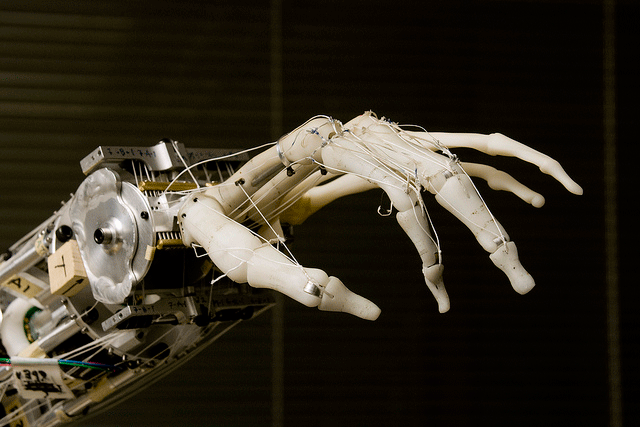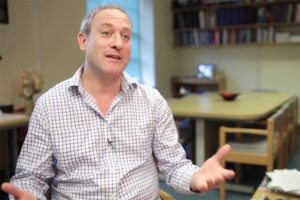Biological Bases of Economic Behavior
Economist Sacha Bourgeois-Gironde on human's economic behavior, animal's behavior research, and human adaptabi...

Cyberprosthetics are the product of multiple disciplines: medicine, neurophysiology, engineering, and programming. These are next-generation prosthetics with built-in automatic control mechanisms. For instance, when a person walks, they don’t consciously think about shifting their foot, adjusting its angle, or coordinating the knee’s bend with each step. All these are automatic mechanisms.
Today, the best option for most people who have lost a limb, such as below the knee, is often a mechanical device attached to the thigh stump. This typically involves a vertical rod with a horizontal plate at the end to mimic a foot. The problem with these mechanical prosthetics is that they function more as a mechanical crutch, relying on the remaining muscle strength for movement. In contrast, a cyber prosthetic equipped with actuators and a battery acts more like an autonomous walking leg. Firmly attached to the stump, walking requires less effort and makes movements more natural and comfortable. Furthermore, parameters such as pace and stride can be customized to the user.
However, even with precise adjustments, a cyber prosthetic can only navigate flat surfaces well. If a person wants to climb stairs or turn, they must adjust their movement mode manually. While automatic adjustments are possible for basic tasks, more complex actions require control directly from the brain, as the intention to move in a particular way originates there beyond the knowledge of the prosthetic itself.
Thus, for an advanced cyber prosthetic to function seamlessly, it needs a brain-controlled interface, at least for switching modes. Fortunately, today, a “brain-computer interface” (BCI) has been developed, allowing basic commands like “left,” “right,” “forward,” or “backward” to be read from brain signals. These commands are translated into signals for the prosthetic mechanisms, enabling users to control movement modes intuitively. This way, they can adjust the prosthetic’s mode of operation based on the environment and their goals without external controls.
There is no magic in decoding mental commands. First, the person repeatedly imagines specific movements, allowing pattern recognition algorithms to correlate these intentions with unique markers in their brain’s electrical activity. Once trained, the algorithms detect these markers and relay the corresponding commands to the prosthetic, which can then adapt to the user’s intentions: climbing stairs, turning right, etc. This same principle applies to upper-limb cyberprosthetics. For example, modern hand prosthetics have 5-6 motors to control finger movements. Though currently controlled by residual muscles rather than brain signals, the technology for more intuitive control is advancing.
Fully functional cyber prosthetics are not yet widely available, but extensive research is ongoing worldwide, including in our laboratories.
The technology that registers brain activity has roots in medicine and has become highly practical. Sensors are placed on the scalp using a cap with embedded biopotential sensors connected to a processor that decodes these signals and transmits commands to the prosthetic device.
The potential of “thought-based” control extends beyond those who have lost a limb. This technology could enable remote control of external devices, which may find applications in civil and military industries, such as operating robots and other cybernetic equipment.
Cyberprosthetics are not limited to replacing limbs. For decades, temporary heart prosthetics have been used during complex surgeries when the heart must be stopped. During these procedures, an artificial “heart-lung” machine pumps blood. However, this equipment is bulky—more like a cabinet than a heart. The challenge is to make such devices compact enough to be implanted in the body. This goal applies to the heart and organs like the liver, kidneys, and pancreas. Science and technology are close to creating compact prosthetics for internal organs, with much of the groundwork for controlling them via brain-computer interfaces nearly complete.
An exception to organ prosthetics is the brain, an information-processing center where memory, skills, and personal knowledge are stored. Even the most advanced artificial cyberbrain could not carry over a person’s life experience. Unlike a cybernetic leg, which does not require memory transfer to perform its functions, total brain prosthetics remain unattainable. Only limited areas with specific functions might someday be partially replaceable.

Economist Sacha Bourgeois-Gironde on human's economic behavior, animal's behavior research, and human adaptabi...

Neuroscientist Neil Burgess on the origin of neuroscience, drugs in clinical psychology, and the revolution in...

Patients who speak more than one language seem to be twice as likely to have a better outcome after stroke